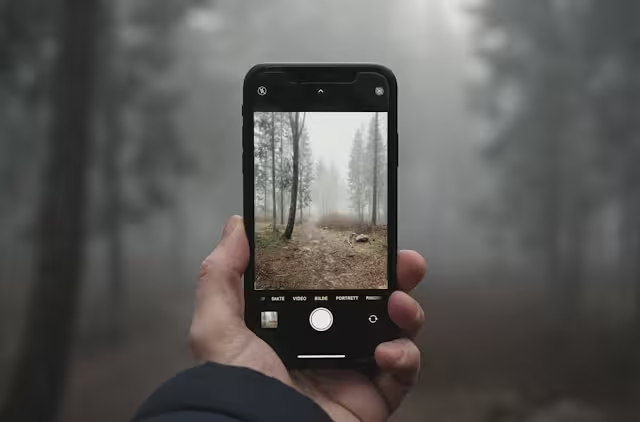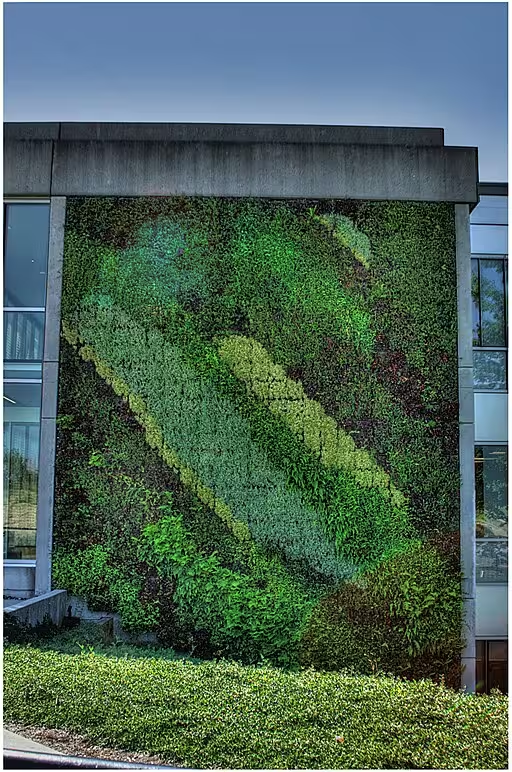The local tourist, often called the “domestic tourist” or “staycationer,” is a fundamentally different audience. Their search intent is not for the generic or the globally recognized. They operate with a highly refined “authenticity detector.” They are searching for novelty, convenience, and genuine experiences within a geography they already understand. Standard, generic website visuals, such as glossy stock photos of unknown people in sterile environments, will fail to capture this market. They are ignored at best and create distrust at worst.
To capture the local market, your website’s visual strategy must perform a more complex function. Its visual elements must build immediate local trust, evoke a sense of “nearby escape,” and provide tangible value. The visual elements you choose are the first signal of the experience you offer. They must communicate authenticity, quality, and a deep understanding of the local environment.
This analysis will deconstruct the 10 essential visual elements required for this task. We will progress from the non-negotiable technical foundations that ensure your visuals are seen, to the advanced psychological triggers, including the integration of biophilic design, that ensure they are felt.
Table of Contents
The Technical Foundation

Before a local tourist can be impressed by your visual elements, they must first appear to be seen. The technical foundation of your website is not a separate issue from your design. It is the platform upon which all visual communication rests. A slow, clunky, or broken visual experience is a direct reflection of your business. For the mobile-first local tourist, performance is the first handshake. A weak grip here loses the customer before they ever see your offerings.
1. High-Fidelity & Authentic Imagery
The first and most critical of all visual elements is the photograph. But not just any photograph. We must move beyond the plague of generic stock imagery. A local tourist knows their own city. Showing them a picture of a “generic, happy couple” drinking “generic coffee” in a space that is clearly not yours creates an immediate brand gap. This gap is a-void of trust.
High-fidelity does not just mean high-resolution, though that is important. It means truthful. Your visual elements must be an honest representation of your space, your products, and your people. Invest in a professional photographer for a single day. The return on investment is exponential. Instruct them to capture:
- The Space: Emphasize natural light, unique architectural details, and the feeling of the environment.
- The People: Show your team, not models. A photo of your chef, your barista, or your guide adds a human element that stock photography cannot replicate.
- The Details: Close-up shots of your product. The texture of the food, the craft of the cocktail, the grain of the wood on your tables. These specific visual elements are what a local “insider” looks for.
Authentic visual elements build subconscious trust. They tell the user, “What you see is what you will get.” For a local tourist who can easily visit in person, and more importantly, leave a local review, this one-to-one match between the digital promise and the physical reality is paramount. Generic visual elements are a liability. Authentic visual elements are your single greatest asset.
2. Optimized Load Speed & Mobile-First Rendering
A beautiful, high-resolution, authentic image that takes 15 seconds to load is useless. It does not exist. The user has already left. Local tourists are overwhelmingly mobile-first. They are on their phones, walking down the street, searching for “restaurants near me” or “things to do this weekend.” Their patience is measured in milliseconds.
Your website’s visual elements are the primary cause of slow load times. Therefore, optimizing these visual elements is a technical imperative.
- Modern Formats: Stop using old JPEG and PNG files. Use modern, next-generation formats like WebP. A WebP image can be 30 to 50 percent smaller than a JPEG at the exact same visual quality. This is not optional. It is a simple switch that dramatically cuts load time.
- Lazy Loading: Implement “lazy loading” for your visual elements. This simple technique instructs the browser to only load the images that are currently on the screen. The visual elements further down the page are not loaded until the user scrolls to them. This makes the initial page-load feel instantaneous.
- Responsive Images: Your website must be smart enough to send the right-sized image to the right device. A massive, 4,000-pixel-wide image (a key visual element for a desktop computer) should not be sent to a small mobile phone. Using responsive image code (
srcset) allows the browser to automatically select the smallest, fastest-loading file appropriate for that user’s screen.2
These technical steps ensure your visual elements work for you, not against you. A fast-loading site feels professional, reliable, and respectful of the user’s time. This technical excellence is a visual element in itself, communicating competence and quality.
Building Local Trust & Authenticity

With a solid technical foundation, you can now deploy visual elements designed to build a human connection. For local tourists, this is not about selling a “dream vacation.” It is about joining a community. They want to support local businesses and feel like an “insider.” The following visual elements tap directly into that desire.
3. Curated User-Generated Content (UGC)
The single most powerful visual element for building local trust is one you do not create yourself. It is User-Generated Content (UGC). This is the “social proof” that real, local people have visited your establishment and had a positive experience. It is an unbiased, visual testimonial.
A local tourist is far more likely to trust a grainy-but-real photo from a local food blogger’s Instagram feed than your perfectly polished, professional shot. Why? Because it is authentic and verifiable.
- How to Use It: Do not just let this content live on social media. Integrate it directly into your website. Use an embedded feed or a curated gallery.
- Encourage It: Run a contest. Offer a small discount for tagging your business. Place a small sign in your shop with your handle and hashtag. Make it easy for people to create these visual elements for you.
- Curate It: Do not show everything. Select the visual elements that best tell your story. Show people smiling. Show them interacting with your product. Show them enjoying the unique features of your space.
These visual elements transform your website from a one-way advertisement into a two-way conversation. It shows that you are an active, loved part of the local community. For a local tourist, this is an open invitation.
4. Human-Centric & “Behind-the-Scenes” Video
Static images tell a story. Video shows the story unfolding. For connecting with a local audience, the most effective visual elements in video are not the polished, corporate brand anthems. They are the raw, human, and “behind-the-scenes” (BTS) moments.
Trust is built on transparency and familiarity. Showcasing the people behind your business is the fastest way to build this.
- Format: Focus on short-form, vertical video (like Instagram Reels, TikToks, or YouTube Shorts). These visual elements feel immediate, personal, and native to the mobile experience.
- Content:
- The “How-To”: Show your chef preparing the local special. Show your bartender mixing a signature drink.
- The “Meet-the-Team”: A 30-second interview with your owner. Let them tell the story of why they started the business.
- The “Day-in-the-Life”: Show the morning prep. Show the arrival of fresh, local ingredients.
These visual elements are effective because they are not “selling.” They are “sharing.” They make the local tourist feel like an insider, giving them a connection and a story they can talk about. This human-centric approach transforms a transaction into a relationship, which is the key to winning repeat local business. Your people are unique visual elements that your competitors cannot copy.
The Biophilic Differentiator

This is where we move from standard web design to a more “brilliant” and effective strategy. Biophilia is the simple, scientific concept that humans have an innate, biological connection to nature. We are healthier, calmer, and happier when we are in or around natural environments.
A local tourist is often seeking a “staycation,” which is a form of escape. They want to de-stress and recharge without traveling far. We can use the visual elements on your website to trigger these same positive, restorative, biophilic responses. By digitally recreating the feeling of nature, you make your website a “place” people want to be.
5. Biophilic Color Palettes (Earthy & Natural Tones)
Color is not merely decorative. It is a powerful psychological tool. Many corporate websites use harsh, sterile, or overly bright color palettes that subconsciously create feelings of stress and urgency. To attract a local tourist seeking an escape, your visual elements must do the opposite.
Use a color palette derived from the local, natural environment.
- Avoid: Harsh blacks, sterile whites, aggressive reds.
- Embrace: Deep forest greens, calming sky blues, warm wood browns, soft stone grays, and sandy beiges.
These colors are psychologically grounding. They have been shown to lower blood pressure and reduce anxiety. When these natural tones are the dominant visual elements of your UI (your buttons, your backgrounds, your text), they make the user feel calmer.
If your establishment is in a coastal town, your visual elements should use the palette of the beach: soft blues, dune grass tans, and whites. If you are in a mountain region, use slate gray, deep pine green, and earthy browns. This not only creates a sense of calm, but it also creates a powerful “sense of place.” The visual elements of your site feel connected to the physical environment you inhabit.
6. Natural Textures & Organic Shapes
Nature has no perfect right angles, no perfectly flat surfaces. The digital world, by contrast, is built on rigid grids and sterile, flat boxes. This creates a subconscious feeling of being in a man-made, unnatural environment. We can, and should, fight this.
- Natural Textures: Instead of a simple, flat-colored background, incorporate subtle, natural textures. These visual elements can be backgrounds that mimic handmade paper, buttons with a slight woodgrain texture, or borders that use the pattern of a leaf. These visual elements add a tactile depth that flat design lacks. They make the digital space feel more real and organic.
- Organic Shapes: Avoid rigid, sharp-cornered boxes for your content containers. Use soft, rounded corners. Better yet, use asymmetrical, flowing shapes that mimic the curves of a riverbed or a hillside. These organic visual elements guide the user’s eye in a more relaxed, natural way.
Our brains are wired to process “fractals,” the complex, repeating patterns found in nature (like a fern, a snowflake, or a seashell). Incorporating these organic shapes and textures into your visual elements makes your website easier and more pleasing for our brains to process. It reduces cognitive load and makes the user feel more comfortable.
7. “Prospect & Refuge” Imagery
This is one of the most powerful concepts in biophilic design. It refers to a fundamental human desire, inherited from our ancestors.
- Prospect: We are drawn to open, clear views. It makes us feel safe, in control, and able to see what is coming. (Example: A wide, open landscape; a view from a mountaintop).
- Refuge: We are also drawn to small, safe, enclosed spaces. It makes us feel protected, cozy, and secure. (Example: A nook, a booth, a space by a fireplace).
The most psychologically compelling spaces, and images, offer both at the same time. The magic combination is a “Refuge” spot with a clear view of “Prospect.”
When selecting your primary, “hero” images, look for this combination. These are the most effective visual elements you can possibly use.
- Good: A photo of your bustling, beautiful restaurant interior.
- Better: A photo from a cozy, warm restaurant booth (Refuge), looking out a large window onto a beautiful park, bustling street, or waterfront (Prospect).
This single visual element communicates “comfort,” “safety,” and “excitement” all at once. It is the very definition of a “nearby escape” that local tourists are searching for. These visual elements are not just pictures; they are psychological triggers for comfort and intrigue.
Interactive & Immersive Visual Elements

Static visual elements are passive. They require the user to simply look. Interactive visual elements are active. They turn the user from a passive “viewer” into an active “participant.” This engagement is critical for converting a local browser into a local customer.
8. Integrated & Interactive Maps
A generic, embedded Google Map is a low-effort, low-value visual element. It is a utility, but it is not an experience. To attract a local tourist, your map must be a high-value tool for discovery.
Create a customized visual map. This is a visual element that sells an entire itinerary, not just your location.
- Go Beyond Your Pin: Do not just plot your own business. Plot a “local’s tour” with your business as the start, middle, or end.
- Highlight Local Entities: Use your map to point out nearby Entities (other local businesses, parks, landmarks, or hidden gems).
- Create an Itinerary: Create a map titled “A Perfect Saturday Afternoon.”
- “Start here with coffee and pastries at our shop.”
- “Walk two blocks to this beautiful hidden park (Entity).”
- “Visit this cool, independent bookstore next door (Entity).”
With this single visual element, you have stopped selling a product and started selling an experience. You have positioned yourself as a local expert and a curator of the community. This provides immense value to a local tourist looking for a pre-planned, novel afternoon. These visual elements build authority and community.
9. 360° Virtual Tours & Drone Footage
The final step in building trust is removing all uncertainty. Local tourists have a low barrier to visiting, but they also have many choices. Your visual elements must convince them that your space is worth the trip.
- 360° Virtual Tours: These visual elements are the ultimate “try before you buy.” They allow a user to virtually “stand” inside your establishment. This is critical for event planners, large groups, or even just anxious customers. A virtual tour visually answers questions you cannot answer with static photos: How big is the space? What is the seating arrangement? Is it private? Is it loud? This transparency is a powerful trust signal.
- Drone Footage: If a 360° tour shows the inside, drone footage shows the context. These visual elements provide the “Prospect” view from the sky. They show your building’s relationship to the neighborhood, the waterfront, the parking, or the mountains. It visually orients the user and reinforces your “sense of place.”
Together, these immersive visual elements give the user a complete and honest picture of your location, from the macro (drone) to the micro (360° tour). You are showing them you have nothing to hide.
The Semantic & SEO Integration
We have assembled a brilliant collection of fast, authentic, human-centric, biophilic, and interactive visual elements. The final step is to ensure that search engines like Google can understand them. This is how you target local tourists online. SEO (Search Engine Optimization) is the act of translating your visual elements into a language search engines can read.
10. Visual Alt Text & Schema Markup
Search engines are powerful, but they are also functionally blind. They cannot “see” a picture. They rely on you to describe your visual elements to them.
- Alt Text: Every image on your website must have “alternative text.” This is not a place for keyword stuffing. It is a place for clear, descriptive language.
- Bad Alt Text: “restaurant photo”
- Good Alt Text: “A local couple enjoys cocktails on our biophilic patio in Boston’s South End, surrounded by green plants.”This description connects your visual elements to key concepts: “local,” “cocktails,” “biophilic patio,” and a specific location (“Boston’s South End”). This is critical for accessibility (for screen readers) and for SEO.
- Schema Markup: This is a more advanced technique, but it is the most powerful. Schema is a “digital label” you add to your website’s code. It does not change how your visual elements look, but it tells Google exactly what your business is.
- You add
LocalBusinessschema to state your name, address, and phone number. - You add
TouristAttractionschema to identify yourself as a place of interest. - You can even use
ImageObjectschema to label your specific visual elements.
- You add
By using Alt Text and Schema, you are providing direct, unambiguous context to search engines. You are connecting your high-quality visual elements to the search queries local tourists are using every day. This is the final, essential step that ensures your visual strategy is not just beautiful, but discoverable.
Conclusion
A successful visual strategy for attracting local tourists is a complete ecosystem. It is not about a single hero image.
It begins with a technical foundation (Elements 1-2) that guarantees your visual elements are fast and accessible. It builds human trust through authenticity, user-generated content, and behind-the-scenes video (Elements 3-4). It then creates a deep, subconscious, positive connection using the powerful triggers of biophilic design: natural color, organic textures, and “Prospect & Refuge” imagery (Elements 5-7). It provides tangible utility through interactive maps and immersive tours (Elements 8-9).
Finally, a-strategic SEO layer (Element 10) ensures that all of this value is understood by the search engines that connect you to your audience.
Your website must not be a sterile digital brochure. It must be a digital environment. It must feel like your physical space. When your visual elements are authentic, fast, and psychologically resonant, you will stop selling to local tourists and start welcoming them into your community.